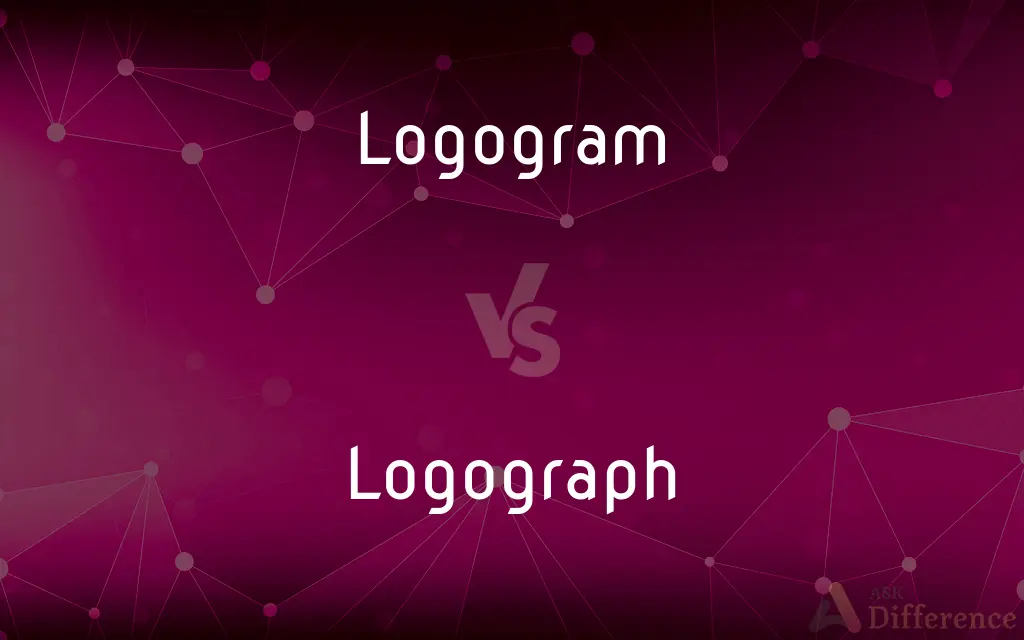Logogram vs. Logograph — What's the Difference?

Difference Between Logogram and Logograph
ADVERTISEMENT
Compare with Definitions
Logogram
In a written language, a logogram or logograph is a written character that represents a word or morpheme. Chinese characters (pronounced hanzi in Mandarin, kanji in Japanese, hanja in Korean and Hán tự in Vietnamese) are generally logograms, as are many hieroglyphic and cuneiform characters.
Logograph
See logogram.
Logogram
A written symbol representing an entire spoken word without expressing its pronunciation; for example, for 4 read "four" in English, "quattro" in Italian. Also called ideogram, logograph.
Logograph
A character or symbol that represents a word or phrase.
Logogram
A character or symbol (usually nonalphanumeric) that represents a word or phrase.
ADVERTISEMENT
Logograph
A single written symbol that represents an entire word or phrase without indicating its pronunciation;
7 is a logogram that is pronounced `seven' in English and `nanatsu' in Japanese
Logogram
A kind of word puzzle: a logogriph.
Logogram
A word letter; a phonogram, that, for the sake of brevity, represents a word; as, |, i. e., t, for it. Cf. Grammalogue.
Logogram
A single written symbol that represents an entire word or phrase without indicating its pronunciation;
7 is a logogram that is pronounced `seven' in English and `nanatsu' in Japanese
Share Your Discovery

Previous Comparison
Clique vs. Coterie
Next Comparison
Hirer vs. Hire














































